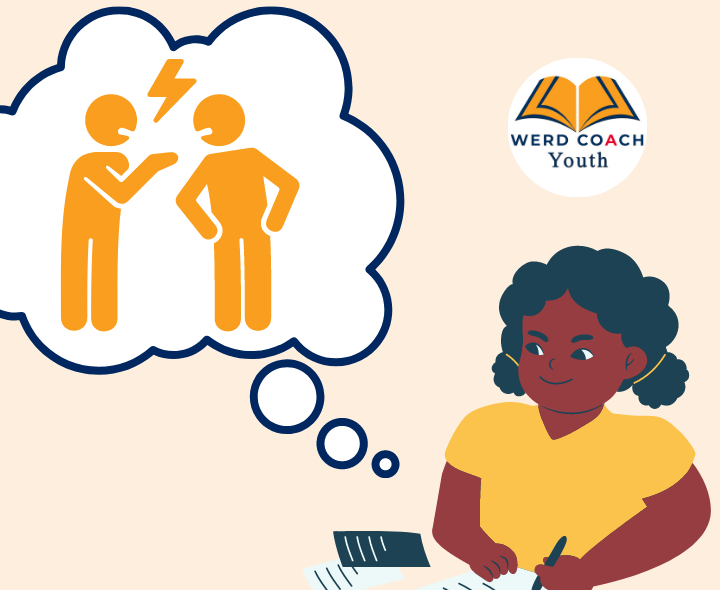Conflict is a major part of storytelling and one of those areas young writers often find challenging. Without effective development of conflict, there is no rising action. The story might seem interesting but the struggles and obstacles to overcome make it seem more realistic and exciting. Many young writers don’t quite understand conflict, so here’s a list of the six types of conflict they need to know. Any one of these can be applied to a story.
For example, let’s consider a prompt such as: You were walking home from school one afternoon and something jumped out at you from behind some bushes. Write a story about what happened next.
Person vs self might look like – a stray dog or cat that you want to take home but can’t because your sister is allergic and no pets are allowed at home. You are torn between the love of the animal and the love of your sister. Knowing that you can’t care for the animal properly, what do you do?
Person vs Person might look like – a bully who pounces on you and torments you. This is something you have to deal with every day and the bully becomes like a villain in your hero story. How do you deal with this bully?
Person vs Society might look like –another child jumps out of the bushes, and this child was trying to hide from other members of your class. It’s the new kid, and in your school, there is a tradition of making fun of the new kids. You don’t like this and decide you’re not going to support it. This brings you up against the majority of the class. How will you face the class and help the new kid?
Person vs Nature might look like – an animal jumping out of the bushes at you, like a mean dog or another animal that could hurt you. The story would be about you escaping or fighting the animal. How would you triumph in this situation?
Person vs Technology might look like – a robot of some kind coming out of the bushes, or something to do with technology that threatens you. This leads you to dealing with killer or alien technology that poses a danger to you and your community. How do you face this strange menace?
Person vs Supernatural might look like – a stranger jumping out of the bushes and scaring you, and as they leave something falls from them. It’s a strange object, and as you touch it, something crazy happens, taking you perhaps to another world or unleashing paranormal events. How do you deal with the unknown? While there are some prompts that suggest what type of conflict young writers need to address in their story, any story can be written to shift the conflict to what that young writer is interested in. This is where creativity can shine through.
#WERDCoachYouth#NarrativeWriting#BetterWriters



